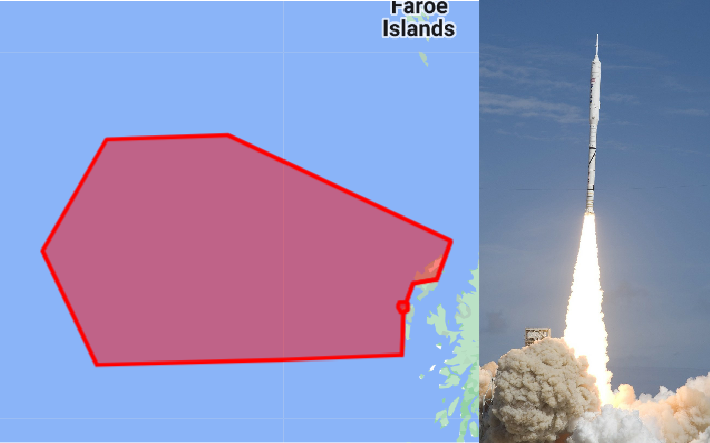Plans to extend a no-
An instrument approach to the north easterly runway at Benbecula could be affected but this can be mitigated by existing operating procedures between the MOD Hebrides Range and airport controllers.
Neither would the handful of small planes using the beach landing site at nearby Sollas be greatly affected.
However, jumbo jets and similar large civilian aircraft flying at high altitude over the Outer Hebrides would be forced to divert many miles off course because of the subsequent activation of a larger neighbouring danger zone.
The Western Isles are on the North Atlantic Ocean fly route for air traffic transiting between Europe and the Middle East to the USA and Canada.
Comhairle nan Eilean Siar is the lead player in the Spaceport 1 project in North Uist which received the planning greenlight last year .
Rockets will be blasted into space from Scolpaig Farm in the north west corner of the island.
The mooted flying ban for the spaceport will only be activated up to three hours each time with a maximum of 10 rocket launches a year plus two contingency days per launch.
The airspace is unlikely to be activated more than 20 times in a year states a consultation paper.
“It is unlikely this airspace change will have any negative impact on the relatively low levels of local (air) traffic.”
Benbecula airport will continue to operate normally during the times that the spaceport airspace is activated. There may be minor track deviations required for specific approaches, but these are no different than those routinely flown for weather considerations.
Airspace safety zones blanket a significantly bigger area than land or sea space safety areas because it seeks a low level of risk for a large aircraft carrying a large number of passengers travelling at high speed.
A small protection zone around the launch pad is also sought following the experience gained when firing similar rockets from the South Uist range.
Unexpected overhead appearances of low flying aircraft presented a “sudden distraction”
risk to personnel conducting critical pre-
It also avoids high frequency radio interference from low flying aircraft affecting rocket systems.
The proposed small danger area around the launch pad would have a 1000 metre radius extending from the surface to a height of 3000ft. It may be activated several days prior to the rocket launch to conduct ‘dry’ runs. The area may also need to be active for several hours before launch.
The spaceport application ended up being a complex and controversial case last year while nearly 1,000 people signed a petition against the plans.
Concerns were raised by members of the public over links with Russia through one
of the firms -
However, while Commercial Space Technology had a ‘Moscow footprint’ it is registered in the UK and not governed by the Russian government. After Putin waged war on Ukraine, the firm suspended all trading with Russia and Russian companies.
Up to 10 launches per year are anticipated at the development which would cost £3 million to construct with rockets soaring into the stratosphere but not going into orbit.
All documents associated with the airspace change application can be viewed on the Civil Aviation Authority’s airspace portal.
No-
25 March 2024

Though the actual proposed airspace change at North Uist would be small it may potentially affect a far wider airspace (coloured red above) normally used by large commercial transatlantic planes